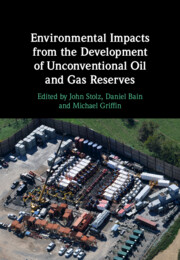Refine search
Actions for selected content:
36 results
6 - Ecological Footprints and Other Forms of Spatial Analysis
-
-
- Book:
- Explaining the History of American Foreign Relations
- Published online:
- 24 October 2025
- Print publication:
- 13 November 2025, pp 121-138
-
- Chapter
- Export citation
6 - Cost–Benefit Analysis
- from Part II - Economic Tools and Techniques
-
- Book:
- Economics for a Sustainable World
- Published online:
- 14 July 2025
- Print publication:
- 12 June 2025, pp 175-196
-
- Chapter
- Export citation
7 - The Ethics of Clothing Production
-
- Book:
- A Philosopher Looks at Clothes
- Published online:
- 08 May 2025
- Print publication:
- 05 June 2025, pp 148-166
-
- Chapter
- Export citation
A quantitative environmental impact assessment of Australian ultra-processed beverages and impact reduction scenarios
- Part of
-
- Journal:
- Public Health Nutrition / Volume 28 / Issue 1 / 2025
- Published online by Cambridge University Press:
- 04 February 2025, e51
-
- Article
-
- You have access
- Open access
- HTML
- Export citation

Hydropower in Authoritarian Brazil
- An Environmental History of Low-Carbon Energy, 1960s–90s
-
- Published online:
- 09 July 2024
- Print publication:
- 27 June 2024
The expansion and remaining suitable areas of global oil palm plantations
-
- Journal:
- Global Sustainability / Volume 7 / 2024
- Published online by Cambridge University Press:
- 19 February 2024, e9
-
- Article
-
- You have access
- Open access
- HTML
- Export citation
Time for “environmentarian corridors”? Investigating the concept of safe passage to protect the environment during armed conflict
-
- Journal:
- International Review of the Red Cross / Volume 105 / Issue 924 / December 2023
- Published online by Cambridge University Press:
- 31 August 2023, pp. 1365-1391
- Print publication:
- December 2023
-
- Article
- Export citation
7 - Going beyond Natural Local Ecosystems, I
-
- Book:
- The Catch
- Published online:
- 11 May 2023
- Print publication:
- 25 May 2023, pp 268-315
-
- Chapter
- Export citation
3 - Environmental Strategy Choices and Challenges
-
- Book:
- Environmental Strategy for Businesses
- Published online:
- 23 February 2023
- Print publication:
- 02 March 2023, pp 31-51
-
- Chapter
- Export citation
9 - It’s Not Easy Being Green
-
- Book:
- Ecolabels, Innovation, and Green Market Transformation
- Published online:
- 27 October 2022
- Print publication:
- 03 November 2022, pp 235-255
-
- Chapter
- Export citation
The environmental impact of data-driven precision medicine initiatives
-
- Journal:
- Cambridge Prisms: Precision Medicine / Volume 1 / 2023
- Published online by Cambridge University Press:
- 26 September 2022, e1
-
- Article
-
- You have access
- Open access
- HTML
- Export citation
Effects of vehicle traffic and trampling on the macrobenthic community of Amazonian macrotidal sandy beaches
-
- Journal:
- Journal of the Marine Biological Association of the United Kingdom / Volume 102 / Issue 3-4 / June 2022
- Published online by Cambridge University Press:
- 05 August 2022, pp. 285-307
-
- Article
- Export citation

Environmental Impacts from the Development of Unconventional Oil and Gas Reserves
-
- Published online:
- 28 July 2022
- Print publication:
- 18 August 2022
Seed-shattering phenology at soybean harvest of economically important weeds in multiple regions of the United States. Part 3: Drivers of seed shatter
-
- Journal:
- Weed Science / Volume 70 / Issue 1 / January 2022
- Published online by Cambridge University Press:
- 15 November 2021, pp. 79-86
-
- Article
-
- You have access
- Open access
- HTML
- Export citation
LOCALIZED IMPLEMENTATION: ECONOMIC AND ENVIRONMENTAL IMPACT OF THE BELT AND ROAD INITIATIVE IN CHINA
-
- Journal:
- Journal of East Asian Studies / Volume 21 / Issue 2 / July 2021
- Published online by Cambridge University Press:
- 12 November 2021, pp. 237-257
-
- Article
- Export citation
6 - Redesigning Food
-
- Book:
- Rewriting Nature
- Published online:
- 11 June 2021
- Print publication:
- 24 June 2021, pp 192-243
-
- Chapter
- Export citation
What is ‘footprint’ in Antarctica: proposing a set of definitions
-
- Journal:
- Antarctic Science / Volume 30 / Issue 4 / August 2018
- Published online by Cambridge University Press:
- 13 June 2018, pp. 227-235
-
- Article
-
- You have access
- HTML
- Export citation
Comparative environmental impact assessments of green food certified cucumber and conventional cucumber cultivation in China
-
- Journal:
- Renewable Agriculture and Food Systems / Volume 33 / Issue 5 / October 2018
- Published online by Cambridge University Press:
- 29 May 2017, pp. 432-442
-
- Article
- Export citation
Chironomids as indicators of natural and human impacts in a 700-yr record from the northern Patagonian Andes
-
- Journal:
- Quaternary Research / Volume 86 / Issue 2 / September 2016
- Published online by Cambridge University Press:
- 20 January 2017, pp. 120-132
-
- Article
- Export citation
INCORPORATING ENVIRONMENTAL OUTCOMES INTO A HEALTH ECONOMIC MODEL
- Part of
-
- Journal:
- International Journal of Technology Assessment in Health Care / Volume 32 / Issue 6 / 2016
- Published online by Cambridge University Press:
- 09 January 2017, pp. 400-406
-
- Article
-
- You have access
- HTML
- Export citation
